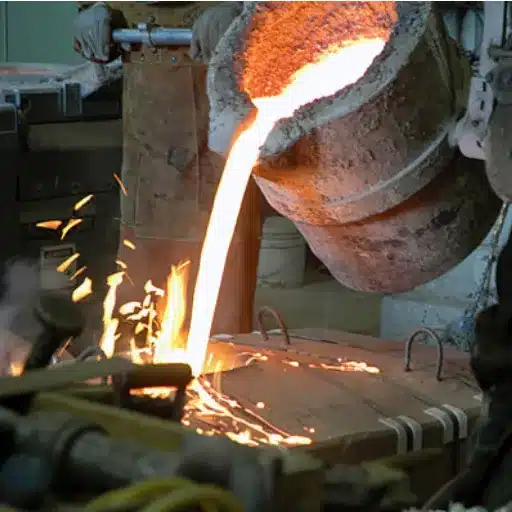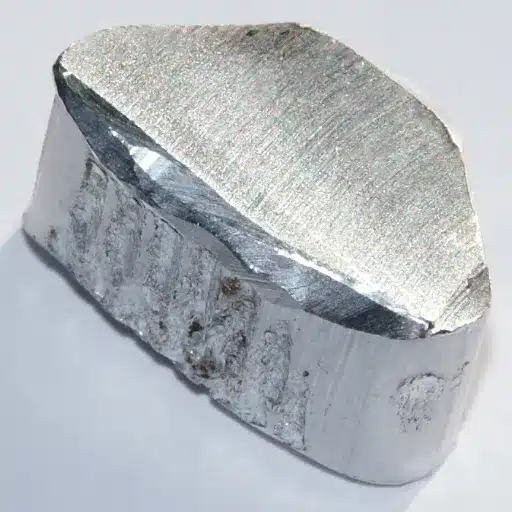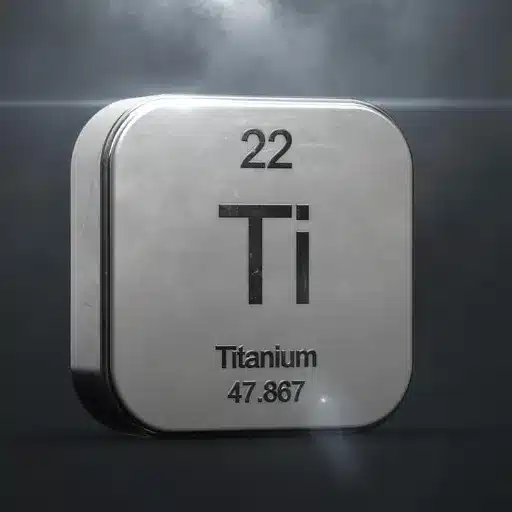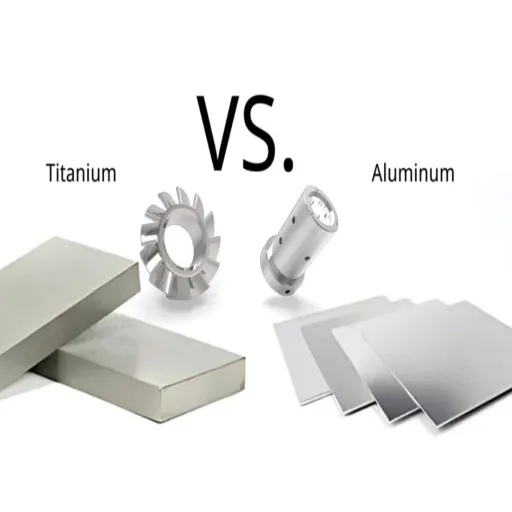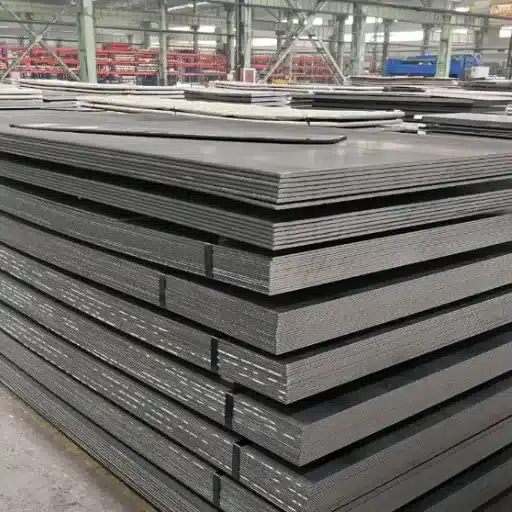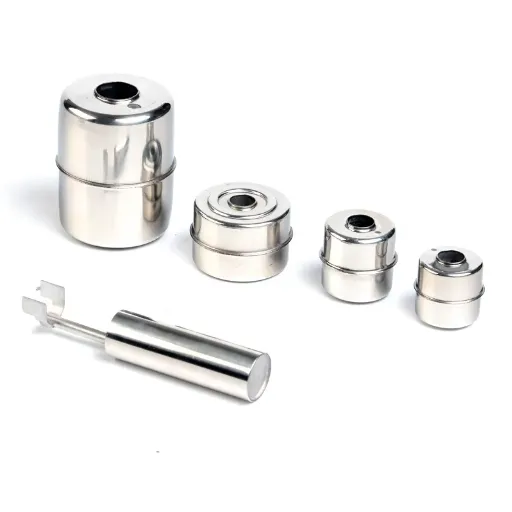Where there is a need for unparalleled strength and resistance to corrosion, super duplex stainless steel is emerging as the king in the industry. This specialized alloy performs exceptionally well even in extremely challenging environments, such as offshore oil rigs and marine applications, as it combines the best attributes of both austenitic and ferritic stainless steels. The goal of this article is to analyze the characteristics that make super duplex stainless steel stand out from its competitors. We will examine the chemical composition and mechanical properties of the steel, the advantages it offers compared to other materials, and ultimately explain the reason behind its gradual preference among engineers. So, keep on reading as we unlock the secrets to why super duplex stainless steel possesses unparalleled resilience, unlike any other advanced alloy.
What is the difference between duplex and super duplex stainless steels?
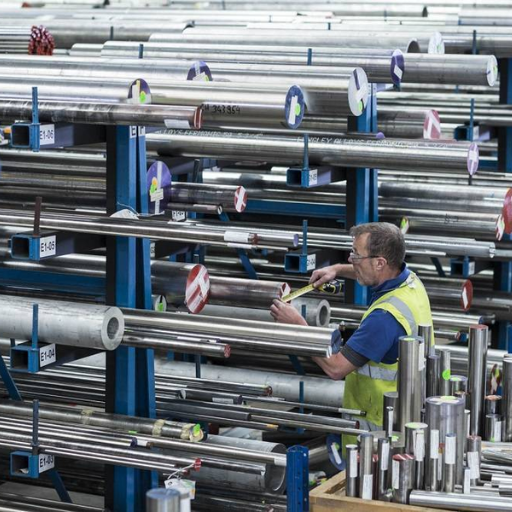
What sets duplex stainless steel apart from super duplex stainless steel is its composition and performance. Duplex stainless steel typically has a balanced microstructure of austenite and ferrite, which gives it heightened strength and exceptional corrosion resistance, especially against stress corrosion cracking. Super duplex stainless steel has a higher chromium, molybdenum, and nitrogen content, which increases its overall strength and resistance to more aggressive forms of corrosion, such as pitting and crevice corrosion. As a result, super duplex steels are better suited for extremely harsh environments such as offshore and chemical processing.
Composition differences: chromium, nickel, and molybdenum content
The specific grade of duplex and super duplex stainless steels is defined by their composition, which in turn affects their potential performance and suitability for various applications. Duplex stainless steels usually contain chromium in the range of 21-23%, nickel in the range of 4.5-6.5%, and molybdenum up to 3%. These values yield a favorable value of strength, resistance to corrosion, and cost. Super duplex stainless steels, on the other hand, have enhanced grades with chromium content of 24-26%, nickel from 6 to 8%, and molybdenum from 3.5 to 4%. The increase of chromium enhances the alloys’ oxidation and corrosion resistance, while greater nickel improves toughness and ductility. Furthermore, more excellent molybdenum content increases the alloys’ resistance to pitting and crevice corrosion, allowing super duplex grades to withstand very corrosive environments with chlorides or acidic compounds. Both grades are balanced with such precise amounts of alloying elements to meet particular industrial needs.
PREN values: How super duplex achieves superior corrosion resistance
The Pitting Resistance Equivalent Number (PREN) is a crucial criterion for evaluating the corrosion behavior of stainless steel, especially in seawater and environments with high chloride content. For super duplex stainless steels, the PREN is calculated using the formula: PREN = %Cr + 3.3%Mo + 16%N.
The equation illustrates the roles of chromium (Cr), molybdenum (Mo), and nitrogen (N) constituents in determining the alloy’s localised corrosion resistance, such as pitting and crevice corrosion. Super duplex grades typically exhibit PREN values exceeding 40, which significantly surpass those of standard duplex or austenitic stainless steels, highlighting their advanced suitability for corrosive environments.
The synergistic effect of these alloying elements enhances protection against aggressive chemical agents. The presence of Cr ensures the formation of a robust passive oxide layer, while the presence of Mo increases the alloy’s resistance to pitting in heavily chlorinated conditions. N also stabilizes the austenitic phase and increases the alloy’s susceptibility towards locally corroded areas. The combination of these properties makes super duplex stainless steels ideal candidates for critical components in industries such as oil and gas, desalination, and chemical processing, which rely on long service life.
Microstructure: Austenitic and ferritic balance in different grades
Super Duplex Stainless Steels have a distinctive microstructure that consists of almost equal amounts of austenite and ferrite phases, usually in a 50/50 ratio, which is referred to as dual-phase. This structure is fundamental to their enhanced strength and resistance to corrosion. The composition of alloying elements such as chromium, nickel, molybdenum, and nitrogen determines the balance between austenite and ferrite in different grades.
For example, higher amounts of chromium and molybdenum tend to increase the level of the ferritic phase, improving resistance to pitting and crevice corrosion in highly aggressive environments. On the other hand, more significant amounts of nickel increase the austenitic phase, improving toughness and weldability even at low temperatures. Accurate control of the austenite-to-ferrite ratio during heat treatment and other manufacturing processes ensures that the properties required by the specific industry are met. The differences in phase balance also directly affect mechanical strength, ductility, and resistance to stress corrosion cracking, which makes proper grade selection and microstructural tailoring essential to withstand harsh service conditions.
What exceptional mechanical properties does super duplex offer?
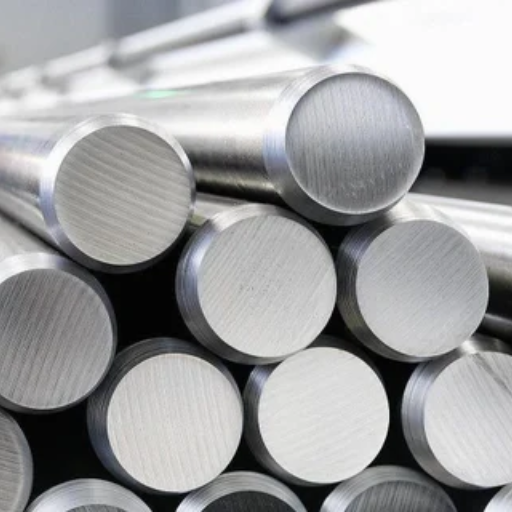
Super duplex stainless steels combine exceptional mechanical properties with high tensile strength, excellent yield strength, and superior resistance to stress corrosion cracking. Their unique microstructure, which is a balanced combination of austenite and ferrite phases, makes them capable of withstanding demanding environments, especially those with high pressure and corrosive media. This makes them highly trusted in critical industries like oil and gas, chemical processing, and marine engineering. Furthermore, these stainless steels also provide outstanding impact toughness and enhanced durability. These attributes guarantee reliable performance under extreme conditions.
High strength and toughness compared to standard austenitic stainless steels
While duplex stainless steels are more expensive than austenitic stainless steels, their advanced strength and toughness come at a premium. Unlike standard austenitic stainless steels, duplex stainless steels boast significantly higher strength and toughness levels. Their two-phase microstructure, composed of ferrite and austenite, provides a higher yield strength, which can reach twice that of conventional austenitic grades. This additional strength allows for a reduced material thickness in some applications, resulting in significant cost savings and lighter structures with a stronger build.
In addition, the toughness of duplex stainless steels allows them to function effectively in low-temperature, high-stress situations. They also manage to preserve their outstanding resistance to stress corrosion cracking, a weakness recognized in standard austenitic grades, especially in areas with high chloride content. These properties make duplex stainless steels perfect for harsh environments in offshore platforms, bridge construction, and the chemical processing industry, which require both mechanical strength and high corrosion resistance.
Yield strength and resistance to stress corrosion cracking
Duplex stainless steels have a yield strength that is significantly greater than that of older austenitic stainless steels, often more than twice as great. Increasing mechanical performance enables savings in the thickness of the materials used for structures, which improves efficiency and lowers costs without compromising strength. The microstructure of duplex steel, which contains about equal parts of austenite and ferrite, gives it exceptional yield strength.
Furthermore, duplex stainless steels exhibit remarkable resistance to stress corrosion cracking (SCC), a type of localized corrosion that poses a significant risk of catastrophic damage, especially in chloride environments. Their SCC resistance is due to the microstructural balance and lowered nickel levels, which reduce the susceptibility of the austenitic grade iron. The combination of mechanical strength and SCC resistance ensures dependable efficiency in highly corrosive environments, such as marine settings, chemical storage tanks, and underwater facilities.
Performance in extreme environments: oil and gas applications
Due to the extreme mechanical properties and environmental resistance, duplex stainless steels have gained popularity in the oil and gas industry. These alloys are often used in offshore platforms, subsea pipelines, and refineries where high pressures, temperatures, and corrosive substances like Hydrogen Sulfide (H₂S) and chlorides are present. Even in harsh environments, their high tensile strength combined with superior corrosion resistance substantially reduces material fatigue and the chances of catastrophic failure. Moreover, sour service environments experience fewer catastrophic failures with these alloys due to increased alloy stability. Moreover, duplex grades have lower resistance to pitting and crevice corrosion compared to conventional carbon steels and austenitic alloys. These processes are standard in saline and chemically aggressive environments. By reducing alloy corrosion and maintenance, duplex stainless steels improve operational efficiency and prolong the service life of oil and gas infrastructure.
How does the corrosion resistance of super duplex material compare to other alloys?
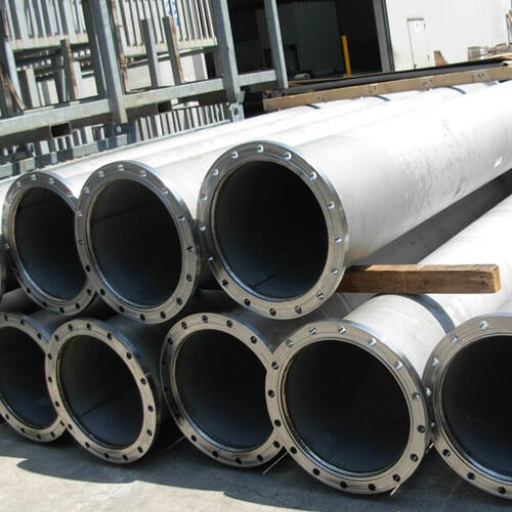
Super duplex stainless steels are far superior in corrosion resistance compared to other alloys, such as standard austenitic and duplex grades. This is due to their high chromium, molybdenum, and nitrogen content, which helps protect against pitting and crevice corrosion, especially in extreme temperatures and highly saline environments. Super duplex alloys also outperform austenitic stainless steels in stress corrosion cracking, making them ideal for demanding applications in chemical processing, marine, oil, and gas industries. Their unique properties ensure lasting performance while minimizing maintenance in corrosive environments.
Resistance to pitting and crevice corrosion in chloride environments
Corrosion pitting and crevices are specific, aggressive forms of localized corrosion that can undermine the structural integrity of metal surfaces. The primary catalysts halting these mechanisms are chloride ions, which are a staple in marine surroundings and industrial chemical processes. With such high chromium (typically 25-27%), molybdenum (3-5%), and nitrogen content, super duplex stainless steels exhibit extraordinary strength against these types of localized corrosion. These elements act together to resist chlorides, with a low level of attack, as the passive oxide layer formation is enhanced at the surface.
Research and industry use cases have shown that super duplex stainless steels outperform standard austenitic stainless steels, such as grades 304 and 316, in environments with high chloride content. One measure of this enhanced resistance is the Pitting Resistance Equivalent Number (PREN), which combines the amount of chromium, molybdenum, and nitrogen into a single indicator. Super duplex alloys achieve PREN values exceeding 40, which indicates they possess outstanding pitting resistance. In addition to this, these alloys also have strength at high temperatures and pressures, which less durable materials would suffer from. Super duplex grades are essential for critical components such as heat exchangers, desalination plants, and marine vessels that require withstanding severe chloride exposure.
Super duplex grades vs. standard duplex in aggressive conditions
In comparisons made with extreme conditions in mind, it is essential to note that super duplex performed better due to its higher concentration of chromium, molybdenum, and nitrogen, which significantly helps with pitting and crevice corrosion. This makes super duplex alloys highly preferred in applications with elevated temperatures, extreme pressures, and high chloride concentrations. Although standard duplex steels perform adequately in corrosive environments, super duplex alloys are unparalleled in enduring extreme adversity, securing their dominant position in critical operations.
UNS S32750 and S32760: Key super duplex grades and their corrosion properties
One of the reasons why UNS S32750 and S32760 are regarded as must-have super duplex stainless steels is the unmatched mechanical strength and corrosion resistance. While boasting exceptional attributes of UNS S32750, its PREN (Pitting Resistance Equivalent Number) claim of over 40 shows its prowess, able to sustain pitting and crevice corrosion in intensely aggressive environments with high chlorides, making gouges of any sort substantially more favorable as well. The robust performance in seawater and chemical processing of the alloy comes from its 24-26% chromium, along with the molybdenum and nitrogen, which ensures the structural integrity of the steel under heavy stress.
Likewise, UNS S32760 has outstanding capabilities in extreme conditions and a comparable PREN exceeding 40, along with increased resistance to stress corrosion cracking. This grade is specially alloyed with tungsten and copper, which further increases resistance to localized corrosion and erosion in sour gas fields and offshore platforms. Both are used extensively in oil and gas, marine engineering, and desalination, where materials need to perform without failure. Due to the properties of UNS S32750 and S32760, they are essential for safety and efficiency in critical applications.
What applications are best suited for super duplex stainless steel grades?
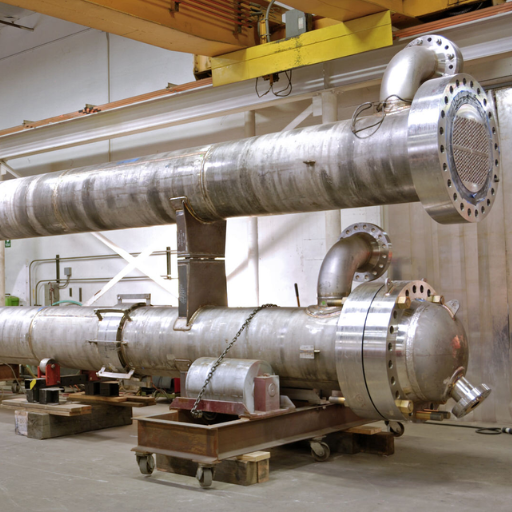
Super duplex stainless steel grades are best suited for applications requiring exceptional strength and corrosion resistance, particularly in harsh environments. These include:
- Marine and Offshore Industries: Used in oil and gas platforms, pipelines, and desalination equipment due to their resistance to seawater corrosion and stress corrosion cracking.
- Chemical Processing: Ideal for storage tanks, heat exchangers, and reactors that handle aggressive chemicals.
- Pulp and Paper Industry: Suitable for processing equipment exposed to acidic and chloride-containing conditions.
- Energy Sector: Commonly used in renewable energy systems, including geothermal and wind turbines.
These applications benefit from the material’s high strength, durability, and reliability under demanding conditions.
Oil and gas industry applications for duplex
During the first seabed exploration, the engineers encountered considerable operational challenges. Durable duplex stainless steels are essential for this purpose and have been used for years due to their unique mechanical properties. In the construction of offshore structures, subsea pipelines, and downhole tools, seawater and high pressure serve as the primary extreme working conditions. Their unique ability to withstand both pitting and crevice corrosion further enables them to meet the working conditions within environments containing chlorides or aggressive chemicals, such as produced water systems and chemical injection lines.
Furthermore, the exceptional performance of duplex alloys enables manufacturers to use them in components exposed to primary production due to their unique performance characteristics in tension and compression, low thermal expansion, low fatigue resistance, reduced work costs, and lower material costs. These advantages allow sea-based projects to require high precision, including the possibility of reducing the size and weight of subsequent devices while simultaneously increasing their performance. Along with proven operational reliability and sustainability, the exploration and operation continue with enhanced construction in Gran Oil, facilitating production along gebranized oil interfaces.
Marine environments and seawater handling systems
Due to the maritime environment, seawater and its accompanying fluid systems require special treatment. This is because they are corrosive and can cause severe damage to marine structures over long periods. Duplex stainless steels are favored for use in these applications because of their superior resistance to both pitting and crevice corrosion compared to austenitic grades. Their elevated tensile strength and resistance to stress corrosion cracking (SCC) are valuable attributes for seawater intake systems, desalination plants, and subsea pipelines. Moreover, the precise mechanical characteristics of the material enable thinner walls to be used in pipes and structural elements, which reduces costs while maintaining safety, performance, and structural integrity. Therefore, the more recently developed duplex grades have enhanced the lower and upper operational temperature limits for reliability during harsh marine environment,s which supports sustainable and efficient operations.
Chemical processing equipment requires strength and corrosion resistance.
We are accustomed to using Chemical Processing Equipment (CPE) that can endure the physical stress and high temperatures of electrical equipment. Advanced duplex stainless steels are the metals of choice because they are pitting-resistant, crevice corrosion-resistant, and considerably better in places with high chloride concentrations compared to other metals. Such metals also have excellent tensile and yield stress, therefore providing more outstanding durability to the equipment while allowing for design optimization by reducing material use. In addition, these metals withstand high pressure at elevated temperatures for prolonged periods, proving their long-term suitability for harsh environments, which subsequently increases equipment reliability and decreases the likelihood of downtime.
Recent changes in metallurgy have targeted the chemical processing industry, and they have designed duplex grades specifically for the reactors, heat exchangers, and storage tanks. Furthermore, these advancements have increased the service life and maintenance intervals of critical systems, which in turn have increased their operational efficiency and reduced operational downtime. With these metals and alloys, one is assured not just exceptional performance, but also outstanding sustainability in demanding processes.
How does heat treatment affect the duplex structure and properties?
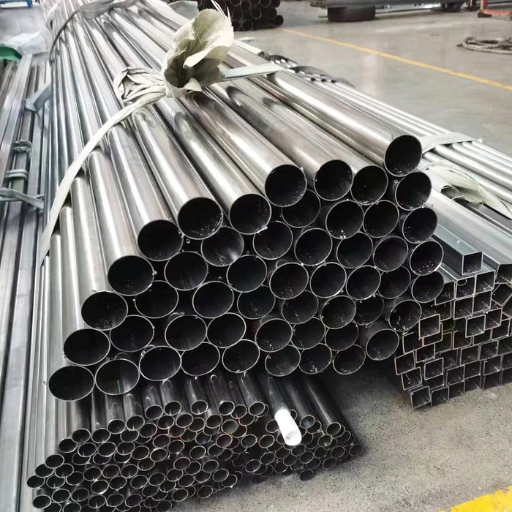
The duplex structure, as well as the mechanical and corrosion resistance properties, are greatly impacted by heat treatment. Balanced microstructures of austenite and ferrite are needed to maintain optimal strength, toughness, and resistance to stress corrosion cracking. Too much heat or time spent at elevated temperatures can result in detrimental phase formation, which impacts toughness and resistance to corrosion, such as sigma or chromite. Strict temperature control, along with recommended cooling rates during processing, is crucial to preserve the integrity of the desired properties.
Balancing austenite and ferrite phases through proper heat treatment
Meticulous heat treatment steps, which consider the alloy’s chemistry and its end use, need to be undertaken to develop and achieve an optimal proportion of austenite and ferrite phases. For instance, duplex stainless steels are designed to achieve a ratio of about 50:50 between austenite and ferrite. Any departure from the balance will compromise the alloy’s corrosion resistance and mechanical strength. Solution heat treatment temperature, cooling rate, and hold time are essential for achieving this balance.
For example, ensuring solution treatment temperatures between 1850°F (1010°C) and 2050°F (1120°C) is crucial in preventing the precipitation of intermetallic phases and maintaining phase stability. Speedy cooling, typically by water quenching, helps preserve the desired phase ratio and limits the formation of carbides or nitrides at grain boundaries, thereby reducing the grain boundaries. In addition, controlled cooling rate is also needed to mitigate thermal gradients, which can produce residual stresses, distortion, and various forms of strain. Controlled phase transformations and precise temperature monitoring, using advanced thermodynamic modeling, ensure the capable construction of the entire product, making it reliable and sturdy.
Avoiding detrimental phases in super duplex microstructure
Heat treatment requires careful attention to temperature and time to eliminate unfavorable phases in super duplex microstructure, which is why I always ensure close supervision over the processes. Harmful phase formations, such as sigma or chi phases, which are well known to be detrimental to mechanical properties and corrosion resistance, are suppressed by focusing on rapid quenching and post-solution annealing. Advanced analytical techniques, such as in-situ monitoring and thermodynamic simulations, allow me to predict the mitigation of these phases and processes promptly.
Impact of heat treatment on mechanical properties and corrosion resistance
The microstructure of alloys is altered by heat treatment, which in turn affects mechanical properties and corrosion resistance. For example, processes such as solution annealing, aging, and tempering maximize tensile strength, hardness, and ductility. During solution annealing, stress points that affect performance uniformity due to localized stress phases are homogenized, improving functional uniformity. Dispersed precipitates that form during aging, particularly in precipitation hardening stainless steels or aluminum alloys, significantly increase strength.
However, improper heat treatment can lead to the formation of unwanted phases, such as carbides or intermetallic compounds, which are often found trapped at grain boundaries. These phases are susceptible to localized corrosion mechanisms such as pitting and stress corrosion cracking. New developments in microstructural modeling and thermodynamics allow temperature profiles to be controlled with greater precision during treatment, minimizing these risks. Other studies highlight the need for cooled atmospheres for controlled treatments at low temperatures to ensure non-variable oxide layers and prevent decarburization, thereby increasing the alloy’s resistance to corrosion in various environments. These crucial aspects exemplify how critical heat treatment is in refining the properties of materials for demanding engineered applications.
What is hyper duplex stainless steel, and how does it compare to super duplex?
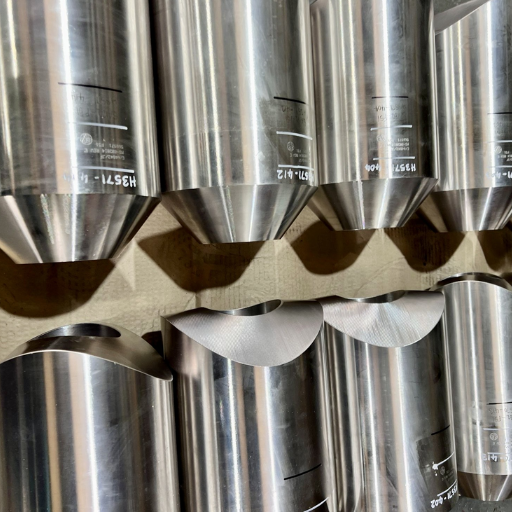
Hyper duplex stainless steel is a more advanced type of duplex stainless steel due to its higher alloy content of chromium, molybdenum, and nitrogen. Such composition gives hyper duplex stainless steel greater strength as well as remarkable resistance to corrosion, particularly in seawater or chemical processing units. Hyper duplex stainless steel also tends to have better mechanical properties than super duplex stainless steel, along with a higher tolerance of localized corrosion, such as pitting and crevice corrosion. Because of this, hyper duplex stainless steel is the preferred choice for applications that require maximum toughness under extreme conditions, while being more affordable than high-performance alloys.
Composition differences between super duplex and hyper duplex
The primary difference between super duplex and hyper stainless steels is chemical composition and performance characteristics. Hyper duplex stainless steels are likely to contain more significant amounts of chromium than super duplex, ranging from 25% to 27%. This also means hyper duplex has better corrosion resistance. Hyper duplex alloys are also likely to have more significant amounts of nitrogen, around 0.3% to 0.5%, improving pitting and mechanical strength. Molybdenum content tends to be the same in both grades, around 3% to 4%. However, hyper duplex occasionally contains higher amounts, which further enhances resistance to crevice corrosion.
In addition, hyper-duplex steels could incorporate a carefully modified proportion of certain alloying elements, such as tungsten and copper, to enhance specific attributes for particularly challenging conditions. Compared to super duplex, these compositional modifications enable hyper duplex to endure harsher chloride-laden environments and high temperatures better. Both steel types possess a balanced austenitic-ferritic microstructure featuring a 50/50 equilibrium ratio, which ensures exceptional toughness and strength. Nevertheless, the precise attention to synthetic aspects of hyper duplex distinguishes its performance as superior in more extreme industrial applications.
Advanced corrosion resistance of hyper duplex stainless steels
Hyper duplex stainless steels exhibit further enhancement of chemical and electrochemical corrosion resistance because of the increased molybdenum, chromium, and nitrogen components in the steel’s make-up. These components make the hyper duplex highly resistant to pitting and crevice corrosion, which improves their practicality in highly aggressive and chloride-ridden environments. Also, their balanced austenitic-ferritic microstructure guarantees extensive strength and dependability in the harshest industrial conditions, including chemical processing plants and offshore platforms.
Specialized applications for hyper duplex alloys
Hyper duplex alloys are specifically engineered to perform in demanding environments where standard materials fail.
- Offshore Oil and Gas Production
- Application: Used in subsea pipelines, risers, and umbilicals.
- Performance Data:
-
-
-
- Excellent resistance to stress corrosion cracking under high pressures and temperatures.
- Proven durability in environments with chloride concentrations exceeding 20,000 ppm.
-
-
- Chemical Processing Industries
- Application: Ideal for heat exchangers, reactors, and storage tanks handling acidic or highly corrosive chemicals.
- Performance Data:
-
-
-
- Corrosion resistance in acids like sulfuric and hydrochloric acid due to high chromium (25-30%) and molybdenum content (3-5%).
- Extended service life under aggressive pH conditions, reducing maintenance costs.
-
-
- Desalination Plants
- Application: Effective in brine handling, seawater piping, and evaporator components.
- Performance Data:
-
-
-
- Superior pitting resistance with a PREN (Pitting Resistance Equivalent Number) exceeding 40.
- Extended operational life in high-salinity environments without risk of crevice corrosion.
-
-
- Marine Engineering
- Application: Shipbuilding, offshore wind farms, and marine platforms.
- Performance Data:
-
-
-
- High fatigue strength under cyclic loading in wave-dominated environments.
- Excellent resistance to biofouling and microbial-induced corrosion (MIC).
-
-
- Power Generation
- Application: Utilized in flue-gas desulfurization units and cooling water systems.
- Performance Data:
-
-
-
- Resistance to scaling and corrosion at elevated temperatures and in high-flow systems.
- Long service life in systems with chlorinated dosing water.
-
-
- Pulp and Paper Industry
- Application: Used in bleach plants, digesters, and recovery boilers.
- Performance Data:
-
-
-
- Enhanced resistance to corrosive chemicals like chlorine dioxide and sodium hydroxide.
- Reduction in downtime due to the alloy’s mechanical and corrosion-resistant properties in wet and dry conditions.
-
-
By leveraging their unique chemical composition and microstructural stability, hyper-duplex alloys demonstrate unparalleled performance in these critical applications, ensuring efficiency, cost-effectiveness, and safety in demanding industrial environments.
Reference Sources
- Key Findings: This study examines the corrosion resistance of hot-rolled and cold-rolled 2205 duplex stainless steel. Cold-rolled materials exhibit a higher precipitation rate of sigma phases, leading to reduced corrosion resistance compared to hot-rolled materials. Pitting corrosion in cold-rolled samples initiates at phase boundaries and defects, while in hot-rolled samples, it occurs around sigma phases.
- Methodology: The research employs X-ray diffraction, scanning electron microscopy, and electrochemical tests to analyze microstructures and corrosion behavior after aging treatments at 850°C.
- Key Findings: This study explores reducing backing gas usage during the welding of duplex stainless steel to lower costs while maintaining corrosion resistance. It concludes that reducing backing gas sequences can still achieve acceptable ferrite content (38%-45%) and corrosion resistance, meeting ASTM standards for specific applications.
- Methodology: The research uses gas tungsten arc welding (GTAW) with varying backing gas sequences. It evaluates microstructure, ferrite content, hardness, and corrosion resistance using metallography, ferrite scope, and electrochemical tests.
3. Influence of Plasma Nitriding Process in Wear Strength of the F53 Superduplex Stainless Steel
- Key Findings: Plasma nitriding enhances the wear resistance of F53 super duplex stainless steel by forming nitrides and expanded austenite phases. However, higher nitriding temperatures lead to the formation of chromium nitride, which increases hardness but reduces wear resistance.
- Methodology: The study applies plasma nitriding at different temperatures (350°C–570°C) and evaluates wear resistance through microwear tests, microhardness measurements, and X-ray diffraction to analyze phase formation.
Frequently Asked Questions
Q: How does super duplex compare to other stainless steel alloys in terms of mechanical strength?
A: Super duplex offers substantially higher mechanical strength compared to most stainless steel alloys. It typically provides yield strength approximately twice that of conventional austenitic stainless steel types, with values around 550 MPa (80 ksi) compared to about 210-310 MPa for austenitic grades. This enhanced mechanical strength at room temperature, combined with good ductility and impact toughness, makes duplex an excellent choice for applications requiring both strength and corrosion resistance. Its strength-to-weight ratio is particularly advantageous in structural applications where weight reduction is essential.
Q: What applications is 2507 stainless steel most commonly used for?
A: 2507 duplex stainless steel is primarily used in highly corrosive environments where its superior resistance to various forms of corrosion is critical. Typical applications include offshore oil and gas installations (platforms, pipelines, and process equipment), chemical processing plants (heat exchangers, pressure vessels, and tanks), desalination plants, flue gas desulfurization systems, pulp and paper industry equipment, and seawater treatment systems. Its combination of excellent resistance to chloride stress corrosion cracking, high mechanical properties, and good weldability makes it ideal for challenging industrial environments where standard stainless steel material would fail.
Q: How do duplex stainless steels offer exceptional corrosion resistance compared to other metals?
A: Duplex stainless steels offer exceptional corrosion resistance due to their unique chemical composition and microstructure. The high chromium content (typically 22-25%) forms a passive chromium oxide film that protects the surface. The addition of molybdenum and nitrogen further enhances resistance to pitting and crevice corrosion, especially in environments containing chloride. Super duplex 2507, with its higher alloying content, achieves a pitting resistance equivalent number (PREN) above 40, providing superior resistance to localized corrosion compared to austenitic grades. Additionally, the balanced dual-phase structure helps prevent selective corrosion that might occur in single-phase steels.
Q: What are the key differences between standard duplex grades and super duplex?
A: The key differences between standard duplex grades and super duplex lie in their composition and performance characteristics. Super duplex contains higher amounts of chromium, molybdenum, and nitrogen, resulting in superior corrosion resistance, particularly in chloride environments. While standard duplex grades typically have a PREN of 30-40, super duplex exceeds 40. This translates to significantly better resistance to pitting, crevice corrosion, and stress corrosion cracking. Super duplex also offers higher mechanical strength than standard duplex, although it is typically more expensive and may require more careful welding procedures due to its higher alloy content.
Q: What are the common questions about duplex stainless steel welding and fabrication?
A: Common questions about duplex stainless steel welding and fabrication include concerns about maintaining the proper phase balance, avoiding precipitation of detrimental phases, and preserving corrosion resistance. Welding duplex stainless steel requires careful control of heat input and cooling rates to maintain the optimal austenite-ferrite ratio. Users often ask about filler metal selection, with matching or over-alloyed fillers generally recommended. Questions about post-weld heat treatment, proper solution annealing temperatures (typically 1040-1100°C), and avoiding the 475°C embrittlement range are also common. Fabricators frequently inquire about machining parameters, as duplex grades usually require different cutting speeds and tools than austenitic stainless steels.
Q: How does the cost of super duplex compare to other types of stainless steel?
A: Super duplex generally carries a higher initial cost than lean duplex, standard duplex grades, or conventional austenitic stainless steel types due to its higher alloy content, particularly nickel and molybdenum. However, when considering lifecycle costs, it often provides better value in severe environments. Its superior resistance to various forms of corrosion means longer service life, fewer replacements, and reduced maintenance costs. In critical applications where failure would result in significant downtime or safety risks, the premium price is typically justified. Many users find that, despite the higher upfront cost, super duplex steel provides better long-term economics than lower-grade alternatives that would require more frequent replacement.
Q: What are the temperature limitations for 2507 duplex stainless steel?
A: 2507 duplex stainless steel has temperature limitations that users should be aware of. It maintains excellent mechanical properties at room temperature up to about 250-280°C (480-535°F). Beyond this range, it may experience embrittlement due to the formation of deleterious phases. At low temperatures (below -50°C/-58°F), impact toughness may decrease, though not as severely as in ferritic stainless steels. For high-temperature applications, 2507 is generally not recommended for continuous service above 300°C (570°F) due to the risk of 475°C embrittlement and sigma phase formation, which can dramatically reduce corrosion resistance and toughness. These temperature limitations are important considerations when selecting materials for specific operating environments.

